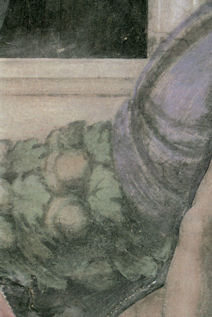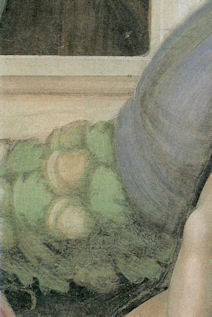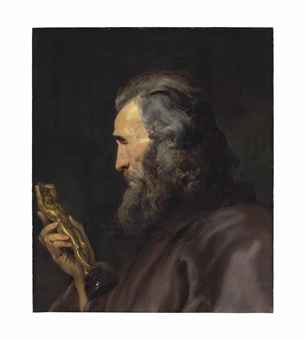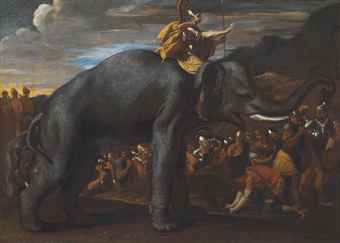 |
| Picture: Amazon |
Sarah Conly
Against Autonomy: Justifying coercive paternalism Cambridge University Press 2013
Paternalistic public policy is in vogue at the moment and much has been written about how governments can promote the best interests of their citizens. But there has been a bifurcation in the literature. On one side paternalists have developed and evaluated tools to intervene most effectively, without pausing much to consider the legitimacy of these interventions. On the other side, critics of paternalistic intervention tend to have a more philosophical bent, challenging paternalism's legitimacy rather than its efficacy. This book crosses the divide. Sarah Conly takes up the philosophical argument for paternalistic intervention, and indeed presses for a more coercive paternalism than is often advocated.
I find coercive paternalism anathema. But I relished the challenge posed by this book, and I think she makes some strong arguments that liberals must confront. In particular, I accept her claim that recent research on human cognition challenges the model of autonomous agency that Mill worked with. Obviously I don't consider it a fatal challenge. Models of human subjectivity have developed and changed considerably over time. Some psychologists imply that there was a monolithic model of human agency that was unchanged through time until their recent experiments, but even the most cursory glance at the history of philosophy shows that to be untrue. Our understanding of both the limitations and the possibilities of human agency has always been more flexible. But this is the background to Conly's book, rather than its substance. I will focus on three areas where I think Conly's argument is wanting, to wit: her attempt to define reasonable limits on coercive paternalism, her attempt to justify coercive paternalism as democratically mandated, and her attempt to define effective forms of policy intervention.
Scope of intervention
Cognitive biases mean that we often act in ways that are inconsistent with achieving the ends that we seek for ourselves. People want to be thin and healthy, but they smoke cigarettes and eat burgers. Conly argues for intervention to make it harder for us to succumb to activities that prevent us from achieving the ends that we've chosen for ourselves. She draws a firm distinction between paternalist intervention in support of ends that we have chosen, and 'perfectionist' policies that seek to impose externally chosen ends.
But distinguishing between our legitimate will and the illegitimate effect of habit is harder than it sounds. St Augustine recognised this when he prayed "Lord make me good, but not yet." Ends and means cannot easily be distinguished. We would all choose thin and healthy over fat and unfit, but that doesn't mean that we're being irrational or acting against freely chosen ends when we buy chocolate bars, choosing a life enlivened with small treats rather than the austerity of behaving healthily at all times. And is it always irrational to choose hedonism? I know lots of people who lived riotously at university, but quit smoking and cut down drinking when they settled down. I don't think those choices were cognitive errors; indeed, some people might have benefited from letting their hair down a bit more.
Conly treats opposition to marijuana and alcohol as being examples of perfectionism, yet she "would recommend we get rid of cigarettes" (p.33). So far as I can tell - and the explanation is never very clear - the difference is just that cigarettes are Very Very Bad for you. There are some specific references to nicotine addiction, but lots of people are able to quit smoking, whereas some people become addicted to alcohol. It's a fine distinction at best, and it strikes me that the fashionable phobia about tobacco is precisely an example of perfectionist politics. There is no clear principle to apply in distinguishing between perfectionism and paternalism, other than the erratic prejudices of the paternalist.
Elsewhere the argument seems to be that coercive paternalism is justified in areas where people won't mind very much: "Requiring that people ... don't buy cigarettes, that they don't eat things with likely lethal effects, doesn't seem to interfere with the basic life choices rights are intended to protect, even in those cases where such requirements fail to benefit" (p. 65). I'm not sure what kind of 'basic life choices' Conly would see as protected, but I recoil from her presumption to know which of my choices are 'basic life choices' and which may legitimately be frustrated by legislative diktat. Banning cigarettes does seem to me to interfere with basic life choices, and interfering with my diet even more so. But the wider point here is that even if I don't care much about the effect of any particular policy on me personally (and as a reasonably fit and healthy non-smoker, I'm not really her target), I value autonomy and freedom for their own sake. Conly anticipates this argument, but rejects it brusquely by claiming that we shouldn't worry too much about the impact of proposed intervention.
Elsewhere the argument is blurred by co-opting debates about commonplace forms of government regulation into the discussion of paternalism. She makes the understandable claim that she would prefer someone else to decide between different options for things like insurance and mortgages (p. 90). The need for government regulation of certain business activities - including the sale of insurance and mortgages - is almost universally recognised. But this quotidian consumer protection seems to me different from the case for coercive paternalism.
The scope for regulation to solve the problem of 'tyranny of choice' is in any case limited. The reason we still have choice is that innovation and competition is beneficial, and regulators understand their own fallibility in choosing the best products for all consumers. I hate shopping for clothes, but I don't think the state should paternalistically choose a uniform for us all to wear. There is a balance to be struck between regulation and the market, and in some cases governments do step in to provide a universal service (such as the British National Health Service). But this is all rather tangential to the case for coercive paternalism.
Justification for intervention
Conly is attuned to the risk of putting experts in charge, recognising that they share the same cognitive biases as the rest of us. But she doesn't articulate how we can reach democratic agreement about how we choose to be coerced for our own good. Once the principle of coercive paternalism is established, what is to stop a majority banning activities enjoyed by unpopular minorities? How do we determine if a particular restriction is 'democratic' as opposed to being sanctioned by experts? These are old debates with huge literatures, but breezily dismissed in this book. At times she implies that a democratic mandate is sufficient. At other points, the rhetorical commitment to democratic rather than expert coercion seems only skin deep: "if we constrain action only in order to get the person to do what he would want to do if he were fully informed and fully rational, this may seem unproblematic" (p. 43). So we must presumably defer to people who are more fully informed and fully rational - or experts, as they're often called.
Law intervenes when there is a conflict between wills - the wills of two parties to a commercial contract, for example, or between the criminal will that wants to wreak havoc and the general will that seeks to preserve order. Conly proposes to use law to intervene between conflicting drives within ourselves. Law will arbitrate when our immediate desires interfere with our chosen ends - "external agency will enter into our decisions about actions that affect no one but ourselves" (p.77). We're all familiar with difficult internal conflicts, whether about major life choices or simply whether or not to eat that last biscuit. Putting that internal conflict on a par with conflict between worked out and coherently articulated wills of individual subjects in legal disputes is a scary thought. It gives the state license to determine what's best for us, obliterating the idea of circumscribed paternalism or democratic legitimacy.
The creepy idea of 'habituation' seeks to inculcate virtues in the citizenry, sometimes by the 'encouragement' of law. This reverses the proper relationship between government and governed, by giving government a mandate to use its powers to re-shape the people and make them behave in officially sanctioned ways. The whole justification of paternalism smacks of wishful thinking. Conly's focus is on determining what governments should do to and for the people. Hard questions about how to persuade people that they should be coerced, or what to do if they elect governments that coerce in ways inimical to Sarah Conly, are not addressed.
Effectiveness of intervention
Conly's focus on the normative (is it right to intervene?) rather than the positive (does intervention work?) re-balances the debate, but positive claims about specific policies bear a lot of argumentative burden and she does not recognise the extent of underlying controversy. Claims about the legitimacy of paternalist intervention are irrelevant if it cannot be made to work. Conly recognises this in the prominence she gives to case studies of particular proposed interventions. The most striking proposal is that cigarettes should be banned. Given the costly failure of bans on alochol during prohibition, and the damaging and ineffective war on drugs, it's hard to take this suggestion seriously.
Banning trans fat is presented as the strongest example of justified intervention - with "almost nothing reasonable to be said against it" (p. 152). But that rather reverses the ordinary burden of proof, implying that everything should be banned unless you can make a case against it! The evidence on trans fats is weak, certainly far out of proportion to the extent of government intervention and public debate on the issue. But even if we allow it, it strikes me as a category error in Conly's argument. Cigarettes are consumed directly, and wearing seat belts and motorcycle helmets are immediate actions taken by citizens. But no one decides that they especially want trans fats with their meal. Trans fats are used in the food industry mainly because they reduce the cost of food preservation.
Seat belt laws are invoked at a number of points as an example of an obviously beneficial paternalist intervention. There's even a picture of a seat belt on the front cover. But the effectiveness of seat belt laws is much disputed. Road death rates do fall after introducing seat belt laws, but they tend to fall in line with a widely recognised secular tendency for road death rates to fall over time (in fact in the UK the trend bottomed out after introduction of the seat belt law!). Worse still, evidence suggests that rather than producing an absolute reduction in harm, seat belts shift harm from drivers to pedestrians, because better-protected drivers instinctively compensate by taking greater risks. John Adams, Emeritus Professor of Geography at University College London has written extensively on this -
here, for example.
Elsewhere she mentions the potential $96 billion saving if tobacco were banned, being the annual healthcare cost attributable to smoking-related illness (p. 181). But this putative saving is widely recognised as nonsense. It doesn't take into account the fact that if people don't succumb to tobacco-related illnesses, they'll be susceptible to other chronic illnesses later in life. And they'll need other forms of expensive social care later in life. It's obviously a good thing for people to live longer, but it's unlikely to save the state money. These examples show that the benefits of paternalist policy may be illusory. But they also reveal the author's own cognitive bias. Her prior belief in the efficacy of intervention has dulled her critical faculties when considering policies.
Final thoughts
Conly recognises that paternalism and liberalism are uneasy bedfellows, and spots the flaw in Thayler & Sunstein's
Nudge:
"rather than regarding people as generally capable of making good choices, we outmaneuver them by appealing to their irrationality, just in more fruitful ways. We concede that people can't generally make good decisions when left to their own devices, and this runs against the basic premise of liberalism, which is that we are basically rational, prudent creatures who may thus, and should thus, direct themselves autonomously" (p. 30).
I think that's right, and it accounts for my objection to being nudged. But Conly misses a weaker formulation of the Thayler & Sunstein case that is more persuasive. This is the claim that choices are never neutral; they are always already framed in ways that nudge us towards a particular decision. Therefore the decision to tinker with the 'choice architecture' just means that we are being more thoughtful about how we are directing people, not choosing whether or not we should direct people. That argument derives strength from its very modesty. No grand claims about human nature are necessary here. It forces critics to engage in argument about detail rather than principle. In developing a more philosophically robust case for paternalism, Conly may ironically have weakened the policy case for intervention.
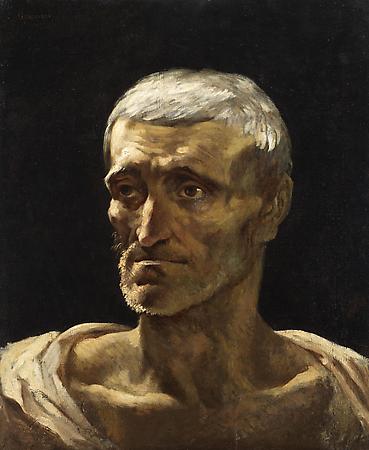



![[selflacecollarss.jpg]](http://2.bp.blogspot.com/-xlQjYLmCtH0/Uakec-vfOVI/AAAAAAAAGjI/zpF4KWBTyDc/s220/selflacecollarss.jpg)
